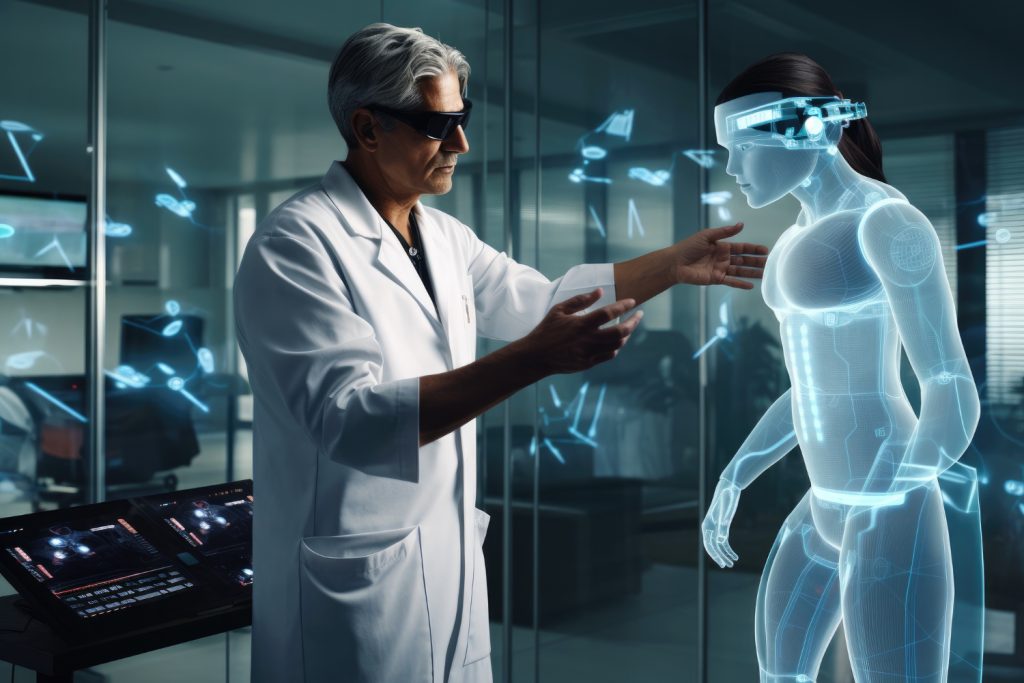Neuralink, a company pushing the boundaries of neurotechnology, is developing brain-computer interfaces (BCIs). Imagine tiny chips implanted in your brain, translating your thoughts into commands for computers and external devices.
This technology can lead to breakthroughs in medical treatments, enhance human capabilities, and open new avenues for human-computer interaction. By integrating BCIs, we can expect more intuitive control over devices, faster data processing, and potentially new forms of communication.
What are the potential medical applications of Neuralink?
Neuralink’s technology holds promise for various medical applications. One of the most significant is in treating neurological disorders. BCIs can help restore motor functions in patients with spinal cord injuries by bypassing damaged nerves and directly stimulating muscles. This could lead to new treatments for paralysis.
Another application is in managing neurodegenerative diseases like Parkinson’s and Alzheimer’s. By monitoring brain activity, BCIs can provide real-time data to adjust treatments and slow disease progression. This personalized approach could improve patient outcomes.
BCIs can also aid in mental health treatment. By understanding brain patterns associated with conditions like depression and anxiety, doctors can develop more effective therapies. This could revolutionize how we approach mental health care.
Finally, BCIs can assist in sensory restoration. For example, they can help restore vision in blind individuals by directly stimulating the visual cortex. This opens up possibilities for treating various sensory impairments.
How can Neuralink enhance human capabilities?

Neuralink’s technology can enhance human capabilities in several ways. One potential area is cognitive enhancement. By directly interfacing with the brain, BCIs can improve memory, learning, and problem-solving skills. This could lead to a new era of human intelligence augmentation.
Another area is physical enhancement. BCIs can enable more precise control over prosthetic limbs, making them feel and function like natural limbs.
BCIs can also enhance communication. By translating thoughts into text or speech, they can enable faster and more efficient communication. This can be particularly beneficial for individuals with speech impairments.
Finally, BCIs can improve our interaction with technology. By providing a more intuitive way to control devices, they can make technology more accessible and user-friendly.
What are the ethical considerations of Neuralink’s technology?

Neuralink’s technology raises several ethical considerations. One major concern is privacy. BCIs can access and potentially manipulate thoughts and memories, raising questions about data security and consent. Ensuring robust safeguards is crucial to protect user privacy.
Another concern is the potential for misuse. BCIs could be used for surveillance or mind control, leading to ethical dilemmas. Establishing clear regulations and ethical guidelines is essential to prevent abuse.
There are also concerns about inequality. Access to BCIs may be limited to those who can afford it, leading to a divide between enhanced and non-enhanced individuals.
Finally, there are questions about the long-term effects of BCIs on the brain. Continuous monitoring and research are necessary to understand the potential risks and benefits fully. Ethical considerations must guide the development and deployment of this technology.
How can startups leverage Neuralink’s technology for innovation?
Neuralink’s brain-computer interface (BCI) technology, while still under development, presents a compelling opportunity for forward-thinking startups to drive innovation across various sectors. Here are some exciting possibilities:
- Healthcare Revolution: Startups can develop applications that utilize BCIs to create personalized treatments and therapies for neurological disorders like Parkinson’s disease, epilepsy, and depression. Imagine BCIs facilitating deep brain stimulation with unmatched precision or helping patients control prosthetic limbs with their thoughts.
- Enhanced Learning: BCIs could be harnessed to develop adaptive learning tools that tailor education to individual cognitive strengths and weaknesses. This could involve monitoring brain activity to identify areas needing reinforcement or personalizing the learning pace. The result? A future where education becomes more effective and engaging for everyone.
- Intuitive Tech Interaction: Startups can leverage BCIs to create entirely new ways of interacting with technology. Imagine controlling your computer or smart home devices directly with your thoughts, or experiencing virtual reality with a level of immersion that feels real. BCIs have the potential to make technology more seamless and intuitive than ever before.
- Immersive Entertainment: BCIs could unlock entirely new forms of entertainment. Imagine virtual reality experiences where your thoughts and emotions directly influence the virtual world. This could lead to hyper-realistic gaming experiences or even interactive storytelling that adapts to your mood.
For more insights on Neuralink and its potential, check out our pillar article: Elon Musk’s Neuralink: The Future of Brain-Computer Interface Technology.
- The Agentic Startup Manifesto - June 8, 2025
- Remote Hiring in 2025 - April 5, 2025
- Burnout in Remote Teams: How It’s Draining Your Profits - January 27, 2025
